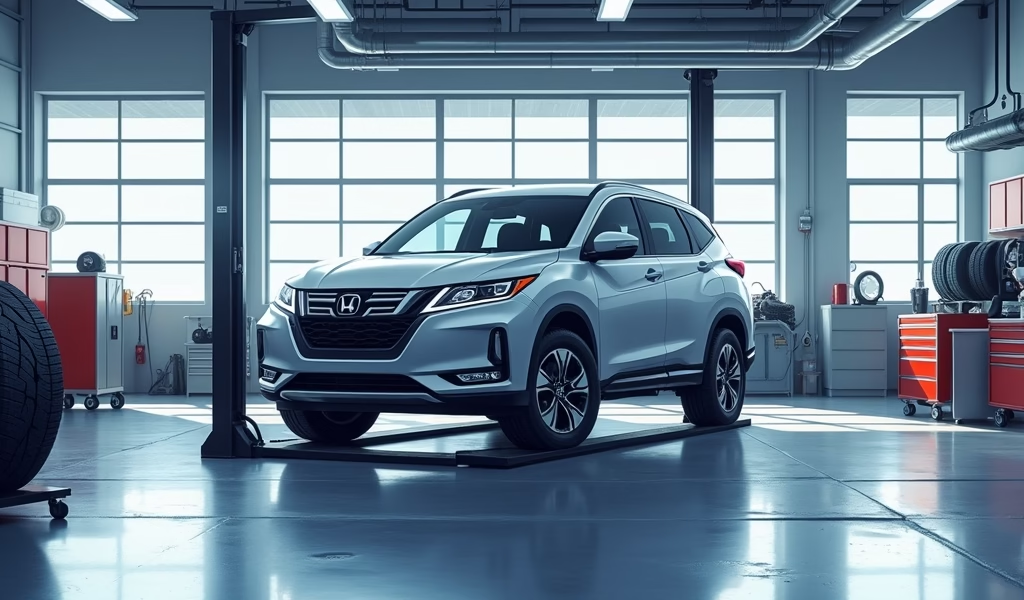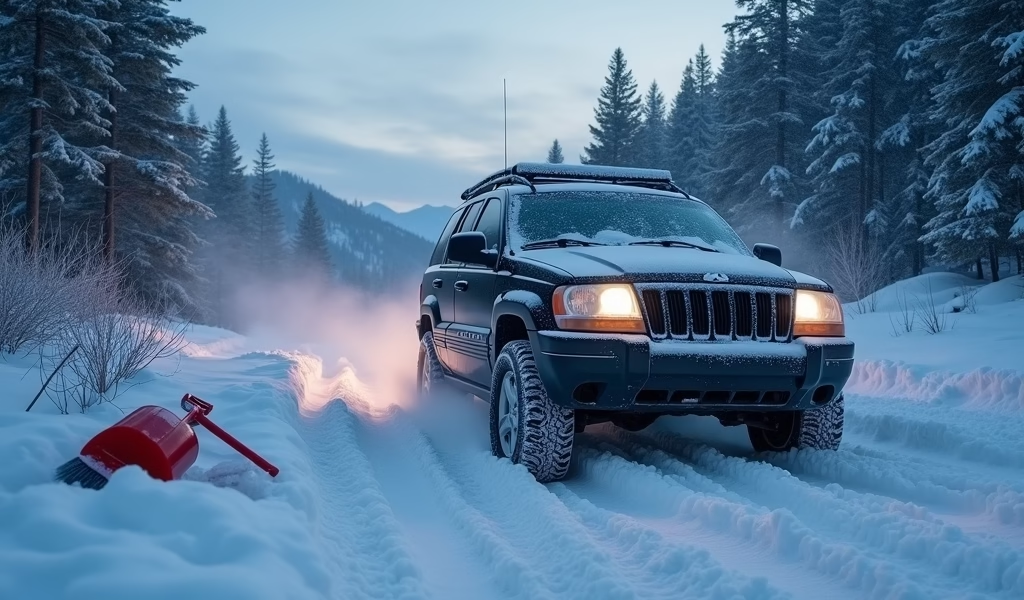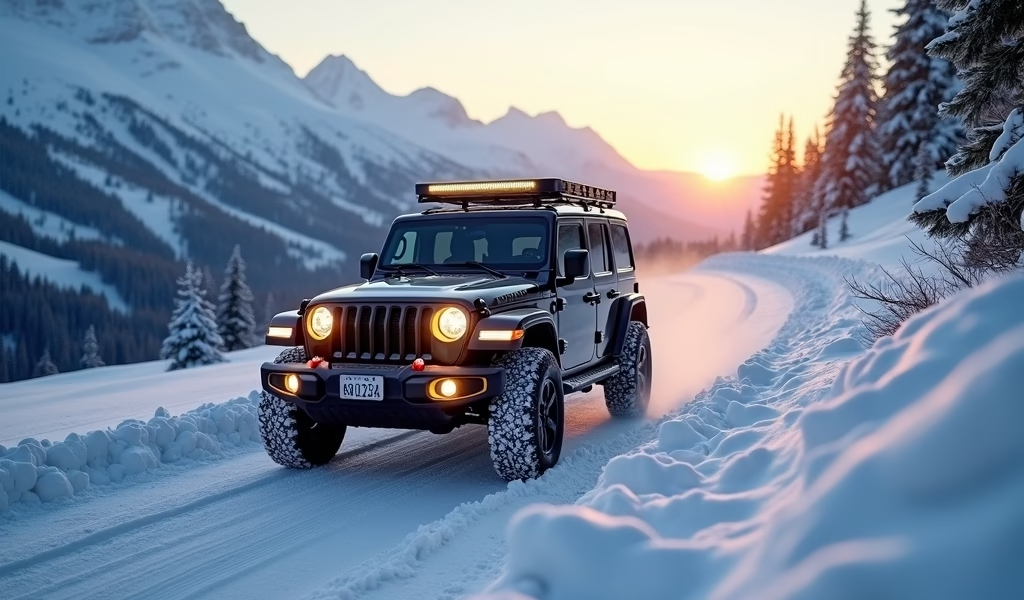Overview
This article outlines five essential maintenance practices for SUVs in winter conditions: proper tire management, fluid maintenance, battery care, undercarriage protection, and emergency preparedness. The author emphasizes that even the best snow-capable SUVs require proper care to perform effectively in winter, noting that AWD/4WD systems alone are insufficient without complementary maintenance like winter tires and regular undercarriage cleaning.
Table of Contents
- What Makes a Great SUV for Snow?
- Winter Tire Maintenance: Your First Line of Defense
- Fluid Management: Keeping Things Flowing in Freezing Temps
- Battery Care: Preventing Cold Weather No-Starts
- Undercarriage Protection: Fighting the Silent Rust Monster
- Emergency Preparedness: Because Mother Nature Doesn’t Care About Your Plans
- Conclusion
- Frequently Asked Questions
Picture this: You’re confidently cruising through a winter wonderland while other vehicles struggle for traction. That’s the dream when you own one of the best SUVs for snow. But here’s what most dealerships won’t tell you – even the most capable snow warrior needs proper care to conquer winter’s worst.
I’ve spent 20+ years as a mechanic in the snowiest regions of North America, and I’ve seen firsthand how the right SUV – properly maintained – can be transformative for winter driving confidence. It’s not just about having AWD or 4WD; it’s about how you prepare and care for your vehicle when temperatures plummet.
Ready to make your SUV unstoppable this winter? Let’s dig into the five essential care tips that will keep you moving safely through the snowiest conditions.
What Makes a Great SUV for Snow?
First things first – what actually makes an SUV excel in snow? It’s more than just marketing hype.
The foundation of snow capability starts with all-wheel drive or four-wheel drive systems that distribute power to all four wheels, dramatically improving traction on slippery surfaces. Higher ground clearance lets you glide over snow instead of plowing through it, while stability control systems specifically tuned for winter conditions keep you pointed in the right direction.
Models like the Subaru Outback, Jeep Grand Cherokee, and Toyota RAV4 consistently rank among the best vehicles for snow performance. The Volvo XC60 deserves special mention for combining exceptional snow capability with class-leading safety features. Each offers unique strengths, from the Subaru’s standard symmetrical AWD to the Jeep’s selectable terrain modes.
But here’s the truth that dealerships gloss over: Even the most capable snow vehicle becomes dangerous when neglected. That perfect AWD system won’t help much with bald tires or a dead battery. Let’s fix that with some professional-grade winter prep.

Winter Tire Maintenance: Your First Line of Defense
Think AWD means you can skip winter tires? I’ve pulled too many AWD vehicles from ditches to let you believe that myth.
Winter tires are your single most important upgrade for snow driving. They use special rubber compounds that stay flexible in freezing temperatures, with aggressive tread patterns specifically designed to bite into snow and ice. The difference is dramatic – studies show winter tires can improve stopping distances by up to 30% compared to all-seasons in snowy conditions.
Cold temperatures cause tire pressure to drop (roughly 1 PSI for every 10°F decrease). Underinflated tires reduce traction, hurt fuel economy, and wear out faster. Check pressure at least twice monthly during winter, preferably when tires are cold for the most accurate reading.
Before winter arrives, inspect your tread depth carefully. The legal minimum is 2/32″, but for snow driving, you want at least 5/32″. Here’s a quick test: insert a quarter into your tread with Washington’s head pointing down. If the tread doesn’t reach Washington’s head, your tires won’t perform well in snow.
And don’t forget about rotation. Winter tires wear differently than all-seasons, so have them rotated every 5,000 miles to ensure even wear and maximum traction throughout the season. Your wallet and your safety margins will thank you.
Fluid Management: Keeping Things Flowing in Freezing Temps
Your SUV’s various fluids face unique challenges when temperatures plummet. Let’s break down what needs attention before the first snowfall.
Start with your engine oil. Cold temperatures increase oil viscosity, making it harder for your engine to turn over. Consider switching to a winter-grade synthetic oil with a lower first number in the viscosity rating – something like 5W-30 instead of 10W-30. That “5W” indicates better cold-weather flow properties, meaning easier starts on frigid mornings.
Next, verify your antifreeze/coolant situation. This fluid doesn’t just prevent overheating; it prevents your engine block from freezing and cracking in sub-zero temperatures. Have your coolant tested to ensure it’s rated for the lowest temperatures in your region. A properly mixed 50/50 solution of antifreeze and water typically protects down to -34°F.
Don’t overlook your windshield washer fluid! Standard washer fluid freezes around 32°F, potentially damaging your reservoir or leaving you without visibility when you need it most. Switch to a winter-specific formulation rated for at least -20°F. I’ve seen too many drivers blindly fumbling through winter storms because they skimped on proper washer fluid.
Finally, check your brake fluid. Moisture contamination in brake fluid can freeze in extreme cold, causing dangerous brake failure. If you haven’t changed your brake fluid in the last two years, now’s the time. Fresh DOT 3 or DOT 4 fluid has hygroscopic properties that absorb moisture, protecting your braking system when temperatures drop.
Battery Care: Preventing Cold Weather No-Starts
Nothing ruins a winter morning faster than a dead battery. The chemical reactions that generate electricity slow dramatically in cold weather, reducing your battery’s output precisely when your engine needs more power to start.
Did you know? At 0°F, a car battery loses about 60% of its strength compared to its performance at 80°F. This creates the perfect storm for those frustrating no-starts on the coldest mornings.
If your battery is over three years old, have it professionally tested before winter arrives. The test only takes minutes but can save hours of headaches later. Watch for warning signs of battery weakness: slow engine cranking, dimming headlights, or electronic features behaving erratically.
Keep connections clean and tight, as corrosion increases electrical resistance. A simple mixture of baking soda and water can clean battery terminals – just disconnect the battery first, starting with the negative terminal.
For those in extremely cold regions, consider a battery blanket or warming pad that plugs into a household outlet. These affordable devices keep your battery at an optimal temperature overnight, ensuring reliable starts even in sub-zero conditions.
And whenever possible, park facing east – the morning sun hitting your engine compartment can provide just enough warmth to make starting easier. It’s a small trick that has saved countless cold mornings.

Undercarriage Protection: Fighting the Silent Rust Monster
Out of sight, out of mind? Not when it comes to your SUV’s undercarriage during winter.
Road salt and deicing chemicals are incredible at clearing roads, but they’re also incredible at accelerating corrosion on exposed metal components underneath your vehicle. I’ve seen perfectly good SUVs scrapped due to frame rust long before their engines wore out – all because their undersides weren’t properly protected.
Regular washing is your first line of defense. Try to wash your vehicle every two weeks during winter, always opting for the undercarriage spray. After major snowstorms when roads have been heavily treated, don’t wait two weeks – wash as soon as possible.
Consider applying a protective undercoating before winter begins. Professional applications provide the best protection, but DIY options exist too. Focus on exposed metal components like frame rails, brake lines, and suspension components.
If you’re feeling ambitious, after choosing the right tires for winter, use fluid film or similar protective spray on hard-to-reach areas like inside frame rails and body panels. These lanolin-based products displace moisture and provide a protective barrier against salt. Just be careful to avoid exhaust components, as these products can be flammable.
Remember: Prevention is exponentially cheaper than repair. The small investment in regular washing and protection can save thousands in premature repairs due to corrosion damage.
Emergency Preparedness: Because Mother Nature Doesn’t Care About Your Plans
Even with perfect maintenance, winter emergencies happen. Will you be ready when they do?
Every snow-ready SUV should contain a well-stocked emergency kit. Having pulled countless stranded drivers from snowbanks, I can tell you firsthand that preparedness makes the difference between a minor inconvenience and a dangerous situation.
Essential components for your winter emergency kit include:
- Folding shovel for digging out of snow
- Ice scraper and snow brush
- Jumper cables or portable jump starter
- Flashlight with extra batteries
- Warm blankets or emergency mylar blankets
- Non-perishable snacks and water
- Basic first aid kit
- Phone charger or power bank
- Traction aids (cat litter, sand, or dedicated traction mats)
- Reflective triangles or emergency flares
SUVs offer excellent storage options for these supplies. Consider using a dedicated container in your cargo area to keep emergency items organized and easily accessible. Many SUVs feature under-floor storage compartments that can house these items without sacrificing daily cargo space.
Before heading out, especially for longer trips, perform quick pre-drive checks. Verify fuel levels (try to keep your tank at least half-full in winter), test all lights, and ensure your phone is charged. I always advise sharing your route and estimated arrival time with someone if traveling through remote areas in winter conditions.
Conclusion
Winter driving demands more from your vehicle than any other season. By following these five essential care tips – maintaining proper tires, managing fluids, caring for your battery, protecting your undercarriage, and staying prepared for emergencies – you’ll maximize your SUV’s performance when you need it most.
Remember that proactive maintenance isn’t just about avoiding breakdowns; it’s about safety. The few minutes you spend checking tire pressure or battery connections could prevent a dangerous roadside emergency in freezing conditions.
Even the best SUV for snow needs proper care to perform at its peak. By following these professional-grade maintenance tips, you’ll be able to drive with confidence regardless of what winter throws your way.
Ready to make this winter your safest yet? Download the Knows Your Car app today to get personalized maintenance reminders tailored to your specific SUV model and local climate conditions. Our expert-developed app helps track your winter preparation checklist, alerting you before small issues become big problems. Because staying safe on winter roads starts with a well-maintained vehicle!
Frequently Asked Questions
What’s the absolute best SUV for snow driving?
While Subarus consistently rank high for snow performance, there’s no single “best” for everyone. The ideal snow-capable SUV combines AWD/4WD, good ground clearance, winter-specific driving modes, and proper winter tires.
Is AWD or 4WD better for snow?
AWD systems excel in variable conditions and require less driver intervention, making them ideal for daily winter driving. True 4WD systems typically provide better performance in extremely deep snow but require more driver engagement.
Do I really need winter tires if my SUV has all-wheel drive?
Absolutely. AWD helps with acceleration in snow, but doesn’t significantly improve braking or cornering. Winter tires improve stopping distances by up to 30% and provide dramatically better handling in all winter conditions.
How often should I wash my SUV during winter?
Wash your SUV every 10-14 days during winter, always including undercarriage spray. After major snowstorms when roads have been heavily treated with salt, try to wash within 4-5 days.
What’s the minimum ground clearance needed for snow driving?
For moderate snowfall (6-8 inches), aim for at least 8 inches of ground clearance. For regions with regular deep snow, vehicles with 9+ inches of clearance provide better capability and reduced risk of getting stuck.


Pingback: Best SUVs for Snow: 5 Proven Treatments - knowsyourcar.com